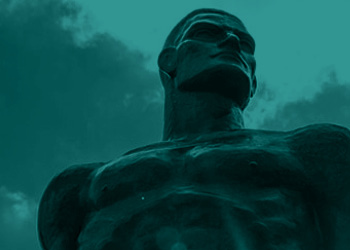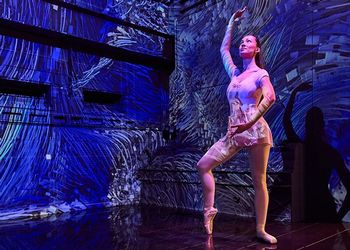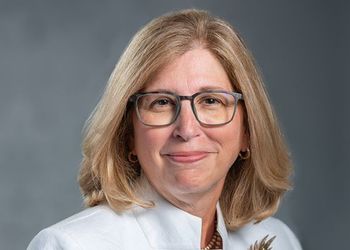Upfront: Team Effort Made Possible the Presidential Debate

TEAM EFFORT MADE POSSIBLE THE PRESIDENTIAL DEBATE
The presidential debate on Oct. 19 showcased MSU for the world. It was a major coup for the university as well as a tremendous learning experience for students. Little known to the public, however, was a tremendous organizational effort to make it possible. The heroes range across the entire spectrum of the MSU community, from Nancy Brent, associate director of public relations, who spearheaded MSU's initial proposal and then attended to media needs along with news bureau director Deb Pozega Pierce, to Bob Underwood, assistant vice president for housing and food services, who organized the logistics of the event, to the more than 250 students who volunteered to work for the debate.
'It was a major, major task,' says Underwood. 'To put it in perspective, it was like the 'Game of the Century' multiplied by 100.'
Indeed, MSU had to host--and accomodate the specific needs of--three political contingents, the secret service, and some 2,000 members of the global media. The Wharton Center, site of the debate, had to work around its commitments to re-arrange the seating, accomodate the set, lighting, anchor booths, angled TV cameras and a panoply of related props--quite a challenge for new director William Wright and new marketing director Kevin Shaw.
Next door to the Wharton Center, Dennis Mayer, director of IM Sports- East, headed preparations to house some 600 print and 1,400 electronic media personnel--including space for food services, medical facilities, and the so-called 'Spin Valley,' the area where anchors for the networks, CNN, C-Span and other shows conduct post-debate analysis. About 2,000 extra telephone lines were installed by Michigan Bell for the event. Some 30,000 square feet of floor was covered with plastic, carpet, a layer of cables, and finally mats. A staggering 150 miles of cable were laid. Porta- johns were brought in and place under a tent. Bob Nestle, university engineer, and Van Frazee of MSU's physical plant took care of a whole range of needs, from installing tables and chairs and TV monitors to portable generators to handle the electricity needs. Director Bruce Benson, Ferm Badgley and others in MSU's public safety department worked in concert with the U.S. Secret Service to ensure maximum safety for the protagonists. Assistant provost Barbara Steidle headed a committee to organize educational programming to take advantage of campus-bound specialists, while Moses Turner, vice president for student affairs, worked for student programs before and during the seminal event. Dottie Mortimer, associate vice president of MSU development, and Lucille Fallon, director of corporate and foundation relations, raised the $500,000 MSU had to pay the National Debate Commission. Meanwhile, Tom Galyon, head of the Greater Lansing Convention and Visitors Bureau, helped raise funds in the community to offset many university out-of-pocket costs.
President Gordon Guyer not only sustained the initial impetus by former president John DiBiaggio to secure the debate for MSU, but also, a week before the debate, played hardball to maximize the number of seats for MSU students--a major triumph for educational interests. Many, many others on campus were also involved peripherally, whether it was the MSU Bookstore selling debate T-shirts, logistics officers controlling the motorcades and general traffic or the crew that designed and painted the 25-foot red, white and blue banner atop Wharton's main door. As Brent sums up, 'It has been shown that many people who normally don't work with each other pooled their talents together and formed a cohesive team that proved very productive.'
Indeed, in perhaps the most nationally visible event in recent MSU history, MSU people pulled together and pulled it off with efficiency, effectiveness and complete smoothness. As alumni of this great institution, you should be proud of this tremendous effort undertaken across the campus. Its ultimate purpose--besides helping to elect a president--was to put MSU's best foot forward on the international stage. And that we did with aplomb.



